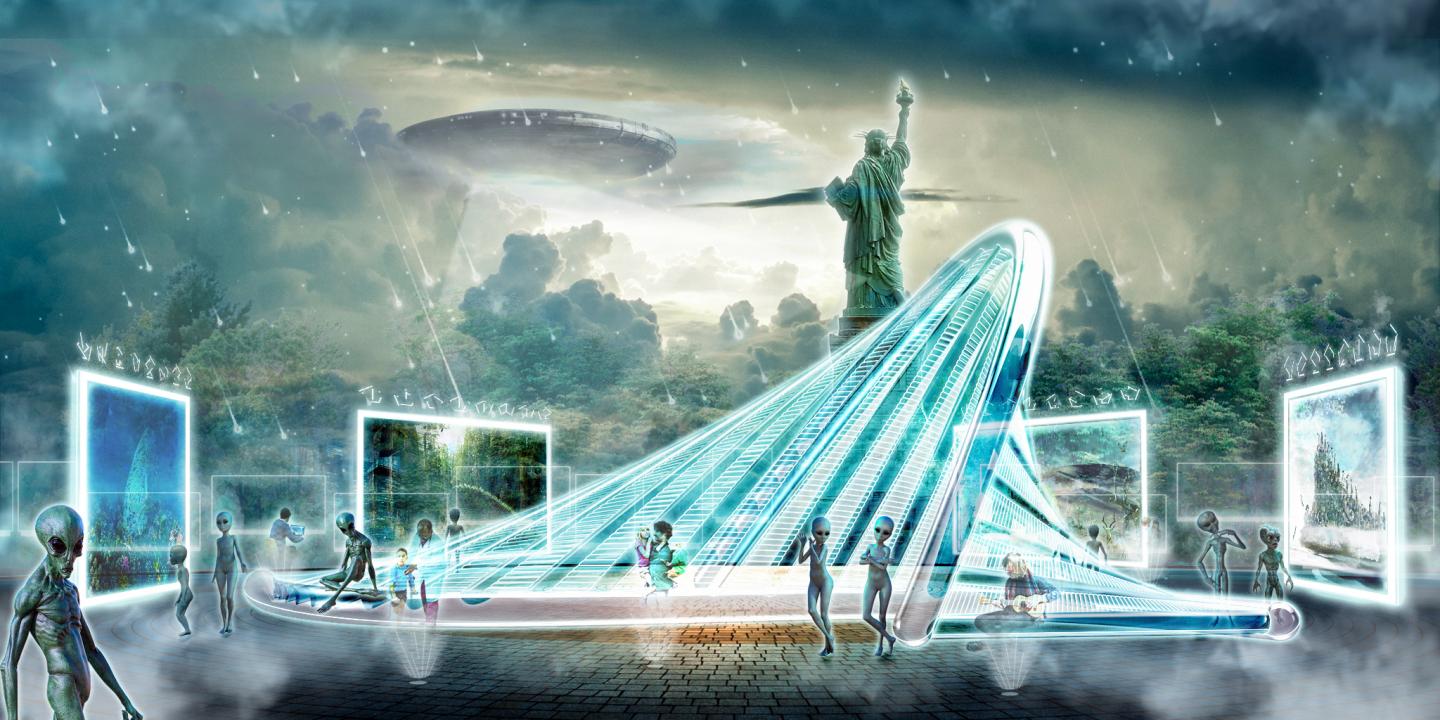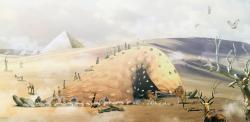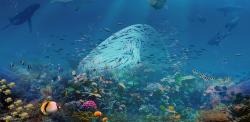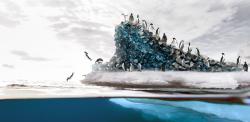This is the Pavilion of Humanity architectural concept competition hosted by Bee Breeders. The competition aims to respond to the negative impact of the current pandemic environment with a positive design concept. The following are the design ideas of our team.
Endangered Earth and Human Achievements
From global warming, energy shortages to the current Covid-19 pandemic crisis, we humans seem to be one step closer to the sixth mass extinction (the mass extinction event caused by human activities). According to the Global Catastrophic Risk Conference held at Oxford University in 2008, experts pointed out that the probability of human extinction is as high as 19% by 2100.
From 1869, Friedrich Miescher first isolated the chemical substance of DNA from white blood cells, to 1953, James Watson and Francis Crick determined the double helix structure of DNA. We believe that DNA is the most representative biological symbol on our planet because it intuitively presents the essence (individual genetic information) and similarity (the double helix structure of genes) of the creatures on the planet.
At the same time, Darwin believes in the book "The Origin of Species" that natural selection is the driving force of biological evolution. Individuals who adapt to the environment will survive, and those who do not adapt will be eliminated. However, the book "Origin of Eukaryotic Cells" by Lynn Margulis indicates that prokaryotes co-exist in eukaryotic cells through cooperation and symbiosis. This "cooperation and symbiosis" model may be the real driving force of evolution, which is in the opposite line with Darwin’s "competitive" view.
Facing an uncertain future, geneticists and biologists seem to give us the answer we want.
Design Solution
1. The Architectural Form: Double Helix
We try to find the most representative symbol that can show all the creatures on the earth. We hope that this symbol is the architectural shape itself, so even if humans are extinct, this symbol will still be preserved for a long time, to show the evidence of our existence (including all living things) for extraterrestrial civilization or the next earth civilization. Therefore, we decided to adopt the double helix structure as the pavilion's main structural form, implying the basic genetic structure of most current earth creatures.
2. Architectural Space: Cooperation and Symbiosis
Studies have shown that 10,000 years ago, the weight of vertebrates on land was 1% of humans and 99% of wild animals, but now the proportion of wild animals is only 1%, and the rest are humans and domestic animals. Obviously, human activities occupy too much living space for wild animals, and habitat's disappearance is the main reason for the sharp decline in the number of wild animals. We believe that "Cooperation and Symbiosis" are the key to solving problems.
Our design divides the building structure into two parts; one part is long-lasting building materials (such as High-strength recycled plastic, Stone, Steel, Concrete, Brick), which serves as the main structure of the pavilion (double helix structure) to support the building space and achieve long-term preservation. Another part is degradable environmental protection materials (such as Grasscrete, Mycelium, Wooden Shingles, Bamboo, Bioplastics), which provide separation of human activity space in the early stage of the building lifecycle, and will be removed from the building through biodegradation in the later stage of the building lifecycle. The pavilion at this time will completely provide a shelter for wild animals.
Conclusion
In short, we redefine the meaning of "temporary building," that is, for us humans, it is short and temporary, but for local creatures, it will be preserved and become local flora and fauna Long-term shelter. At the same time, we hope that our design is duplicatable; it will apply to any place on the earth facing environmental problems to show the efforts made by human beings.
2020
270 square meters
Luming Xiao, Shanle Lin






